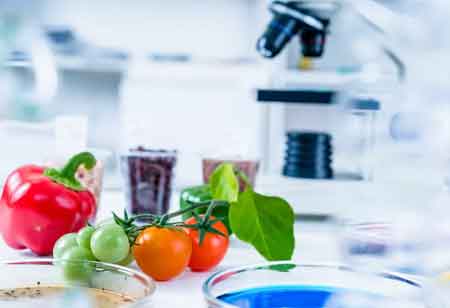THANK YOU FOR SUBSCRIBING
Be first to read the latest tech news, Industry Leader's Insights, and CIO interviews of medium and large enterprises exclusively from Food and Beverage Tech Review
Transforming the Food and Beverage Industry with Robotics
Robotics transforms the food and beverage industry by enhancing efficiency, ensuring quality, reducing waste, improving safety, and delivering personalized customer experiences, shaping a future-ready ecosystem.

By
Food and Beverages Tech Review | Tuesday, January 21, 2025
Stay ahead of the industry with exclusive feature stories on the top companies, expert insights and the latest news delivered straight to your inbox. Subscribe today.
Robotics transforms the food and beverage industry by enhancing efficiency, ensuring quality, reducing waste, improving safety, and delivering personalized customer experiences, shaping a future-ready ecosystem.
FREMONT, CA: The food and beverage industry is transforming and is driven by integrating robotics and automation technologies. With the ability to handle repetitive tasks, ensure quality control, and adapt to changing consumer demands, robotics empowers businesses to innovate and meet the challenges of modern markets. By reducing labor costs, minimizing waste, and enabling personalized experiences, robotics is streamlining operations and paving the way for a sustainable and future-ready food and beverage ecosystem.
Robotics has made remarkable progress in automating various aspects of the food and beverage sector, ensuring precision, reducing human error, and meeting increasing consumer demands. Across the supply chain, robots play a pivotal role, from food production and packaging to distribution and retail. In food production, robots automate tasks like slicing, mixing, and assembly to ensure accuracy and consistency. They also streamline packaging and labeling operations by efficiently handling sealing and labeling processes. AI-powered robots and vision systems enhance quality control by detecting product flaws, impurities, or irregularities. Robots are used to sort and grade items like fruits and vegetables based on size, weight, or quality. Additionally, robotic chefs and servers are becoming popular in restaurants, offering unique dining experiences. In logistics and warehousing, drones and automated guided vehicles (AGVs) simplify inventory management and deliveries, further improving operational efficiency in the industry.
Robotics Transforming the Food and Beverage Industry
Preparation and Processing of Food: Robots are highly effective in performing repetitive and precision-oriented tasks, making them ideal for food preparation processes such as dicing, slicing, chopping, and mixing. For example, robotic arms with sensors can accurately slice meat, prepare dough batches, and assemble complex dishes like pizzas and sandwiches precisely and consistently.
Labeling and Packaging: Robotics are used in labeling and packaging to ensure speed and accuracy throughout the process. Automated systems efficiently handle tasks such as sealing, labeling, and filling bottles. These robots can adapt to various product sizes and packaging shapes, minimizing waste while maintaining uniformity in packaging operations.
Inspection of Quality: Robotics and advanced imaging technologies play a critical role in quality assurance. Robots can measure dimensions, identify product defects, and detect contaminants. For instance, vision-guided robots in meat processing facilities detect flaws, ensuring that only high-quality products reach consumers.
Inventory Control: In warehouse operations, robots and automated guided vehicles (AGVs) assist inventory management by organizing storage, managing stock levels, and transporting goods. These systems streamline inventory processes, reduce human effort, and minimize errors, making inventory control more efficient and reliable.
Hygiene and Food Safety: Robotics ensures strict compliance with hygiene standards, significantly reducing the risk of contamination compared to human handling. Operating in cleanroom environments, robots handle raw and cooked foods with precision and care, minimizing the chances of foodborne illnesses and maintaining food safety.
Customer-Focused Services: Beyond backend operations, robots are increasingly used in customer-facing roles. Service robots in cafes and restaurants are designed to take orders, serve food, and enhance customer experiences. These robots provide consistent, high-quality service while creating interactive and engaging dining experiences.
Robotics drives operational excellence and supports the industry's commitment to innovation and growth by minimizing human error, reducing waste, and streamlining workflows. As technology advances, the food and beverage sector will increasingly rely on robotics to create a future where convenience, quality, and customer satisfaction go hand in hand.
I agree We use cookies on this website to enhance your user experience. By clicking any link on this page you are giving your consent for us to set cookies. More info







